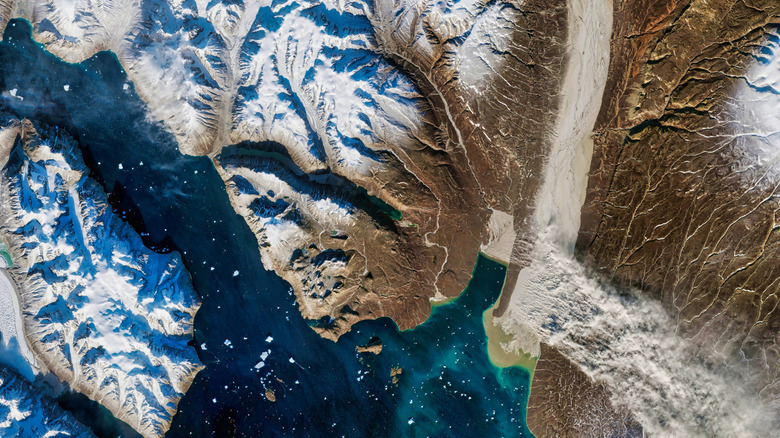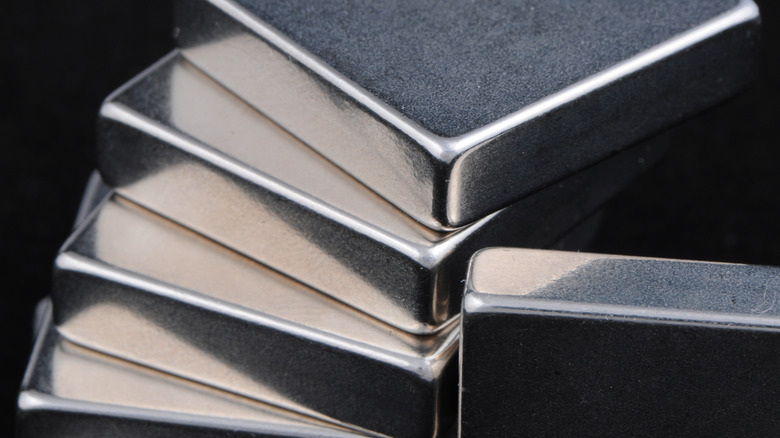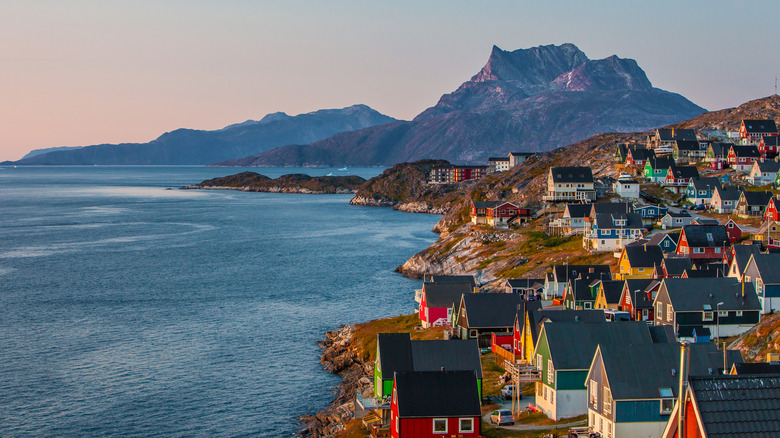Why These 46 Square Miles Of Greenland Are Worth Billions
When you think about it, 46 square miles doesn't sound that significant in the grand scheme of things. The United States measures nearly 3,800,000 square miles, for example. But 46 isn't anything to scoff at — that's roughly the size of San Francisco, a major urban business hub. San Francisco's 46 square miles have helped turn California into the world's fourth-largest economy, outranking whole countries' GDP figures.
So it's no surprise that Greenland's Kvanefjeld plateau, an area spanning 46 square miles that contains massive deposits of uranium, thorium, and other rare earth elements and oxides, has gotten the world's attention recently. Increasingly seen as one of the most valuable mining sites on the planet, this region of southern Greenland has the potential to supply up to 15% of the global rare earth element demand, according to reporting from Reuters. These elements are found in everything from everyday electronics to laser-targeting systems used by the world's military forces.
But due to several complicating historical, political, and cultural factors, the future of the Kvanefjeld project, as it's commonly referred to, is uncertain. It's on the scale of the biggest precious metal deposits ever found, and as such, some see it as a key to Greenland's economic independence; others worry about environmental degradation and radioactive contamination. The debate over what to do with Kvanefjeld only intensified in 2021, when the government effectively banned uranium mining, frustrating the mining companies that had been looking to exploit the area's mineral deposits for quite some time. In March of 2025, the ruling party responsible for the ban was voted out of power, leaving Kvanefjeld's future up for debate as a newly proposed coalition government tries to find its footing and its priorities. Here's why you should follow what's happening on the world's largest island.
Why Kvanefjeld matters
The Kvanefjeld plateau in southern Greenland is more than a patch of remote Arctic terrain; it's one of the richest rare earth element deposits in the world. According to a 2015 report by Greenland Minerals and Energy Limited (now Energy Transition Minerals), the area contains over 1 billion tons of resources comprising hundreds of millions of pounds of U3O8, a common uranium oxide, and nearly 25 billion pounds of rare earth oxides. All told, the materials at Kvanefjeld are projected to be worth $7.5 billion (which is still a fraction of the value of the world's largest gold deposit). The plateau holds a valuable mix of materials essential to modern technology. Among the most sought-after elements found here are neodymium and praseodymium, which are used to make high-strength permanent magnets essential for tech devices like medical equipment, electric cars, and wind turbines.
Neodymium-iron-boron magnets, for instance, rank among the strongest permanent magnets known. They're also the most common, comprising 95% of all permanent magnets produced today. They're so important that IEEE Spectrum, the flagship publication of the Institute of Electrical and Electronics Engineers, once called them "the magnet that made the modern world." Praseodymium, when alloyed with magnesium, helps create strong, lightweight metals used in aircraft engines.
Kvanefjeld also contains uranium. While not considered a rare earth element, it's a radioactive material with significant implications for nuclear energy production (check out our breakdown of what uranium is used for). And its inclusion in the mineral mix complicates the mining process. Extracting uranium safely requires specialized techniques to prevent radioactive contamination, making the project both scientifically challenging and politically charged. The debate over whether the economic and political benefits outweigh the environmental risks continues to shape the rapidly approaching future of the Kvanefjeld project.
Greenland's mineral balancing act
The political landscape surrounding Kvanefjeld is complex and contentious. As advanced economies in the West try to move away from reliance on China — which is responsible for exporting the vast majority of rare earth elements to the world — many are looking to Greenland and other countries for an answer to questions about supply-chain reliability in the future. Greenland has a system for awarding mining licenses to international companies, but reserves the right to revoke those licenses when it feels a company's interests don't align with its own. And in 2021, Greenland citizens elected a leftwing government that eventually upheld its campaign promise of outlawing uranium mining due to pollution risks.
Because Kvanefjeld's uranium deposits are enmeshed with the rare earth elements that mining companies are looking to extract, the policy stopped any plans for a mine dead in their tracks. Energy Transition Materials, the same company that issued the 2015 report on Kvanefjeld's mineral reserves and their prospective value, had invested years and hundreds of millions of dollars into exploratory drilling in the area under the assumption that mining plans would go through eventually. The company is now suing Greenland's government for mining rights, or a compensatory payment of $11.5 billion. Today, Kvanefjeld stands at the crossroads of a pitched international struggle involving economics, power, and legality.
Opinions within Greenland are divided on the question of whether the mine would be a benefit or a burden to its people. While the country maintains its own government, Greenland is an autonomous territory of Denmark and relies on it to maintain a healthy economy and energy infrastructure. Now, it's trying to balance maintaining the integrity of its environment while gaining economic and energy independence from its closest partner.


